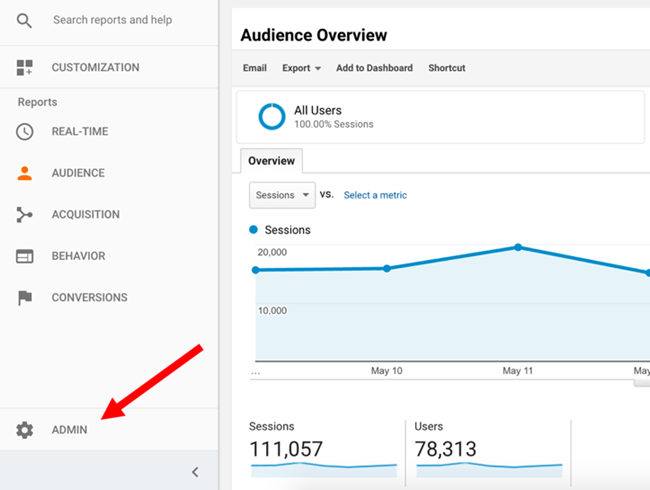A Full Guide to Remarketing In Google Analytics
A Full Guide to Remarketing In Google Analytics
Blog Article
Taking Advantage Of Remarketing in Google Analytics: A Comprehensive Overview
Using remarketing in Google Analytics uses businesses a tactical edge in connecting to potential clients. The ability to target people who have currently interacted with your internet site provides an one-of-a-kind opportunity for customized advertising initiatives. By comprehending how to craft audience listings and release them effectively, services can substantially improve their conversion prices. Nonetheless, the details of establishing up and maximizing remarketing campaigns require a thorough understanding of target market segmentation and performance analysis. This overview will certainly shed light on the crucial actions entailed in using the complete possibility of remarketing in Google Analytics, bring about boosted advertising results.
Understanding Remarketing in Google Analytics
Remarketing in Google Analytics allows businesses to purposefully target users that have formerly interacted with their web site or mobile app. By leveraging information from Google Analytics, businesses can develop customized remarketing lists based upon user habits, such as pages seen, activities taken, or specific objectives attained. This effective tool enables services to re-engage with customers who have actually shown rate of interest in their services or products, inevitably raising the likelihood of conversion.
Comprehending the various types of remarketing approaches is crucial for an effective campaign - What Is “Remarketing” In Google Analytics?. Google Analytics offers different alternatives, including typical remarketing, dynamic remarketing, and remarketing lists for search ads (RLSA) Each type serves an unique objective and can be customized to meet details advertising and marketing purposes
Moreover, analyzing the performance of remarketing campaigns is necessary for optimizing outcomes. Google Analytics supplies useful understandings into the efficiency of different remarketing strategies, allowing organizations to make data-driven choices and improve their targeting strategy. By continually keeping track of and changing remarketing efforts based on analytics information, organizations can optimize ROI and drive success in their advertising campaigns.
Establishing Up Remarketing Projects

After setting up audience checklists, the following action is to connect Google Analytics with Google Advertisements. By connecting these 2 platforms, organizations can effortlessly transfer audience checklists from Google Analytics to Google Ads for remarketing purposes. This combination enables for more specific targeting and much better campaign efficiency.
When the accounts are connected, businesses can produce remarketing campaigns in Google Ads making use of the audience details formerly defined in Google Analytics. These projects can be tailored with details ad creatives, messaging, and bidding process methods to efficiently re-engage with previous visitors and drive conversions. By adhering to these steps, businesses can utilize the power of remarketing to enhance their advertising and marketing efforts and boost ROI.
Utilizing Target Market Division Strategies

Predefined segments in Google Analytics enable her explanation you to promptly evaluate typical target market categories fresh customers, returning customers, or individuals that finished a particular objective on your internet site. Custom sections, on the other hand, allow you to develop unique sections based upon details standards that are very important to your company goals. Dynamic remarketing listings immediately readjust based on individual actions, revealing personalized ads to customers who have actually interacted with your site particularly means.
Studying Remarketing Efficiency Metrics
Upon examining the effectiveness of remarketing projects in Google Analytics, the analysis of vital performance metrics provides useful insights right into audience interaction and conversion rates. By diving right into metrics such as click-through rates (CTR), conversion prices, price per acquisition (CERTIFIED PUBLIC ACCOUNTANT), and return on ad spend (ROAS), marketers can assess the success of their remarketing initiatives. Examining these metrics enables marketing professionals to enhance projects, refine target market targeting, and designate budgets effectively to boost total remarketing performance.
Optimizing Remarketing Techniques
When refining remarketing approaches in Google Analytics, focusing on target market division is vital for accomplishing project success. By splitting your audience right into specific sections based on their habits, demographics, or passions, you can customize your advertisements much more effectively to every team. This targeted technique increases the chance of involving users who have actually already shown rate of interest in your products or solutions, causing greater conversion prices.
An additional essential element of enhancing remarketing methods is continually screening and refining your projects (What Is “Remarketing” In Google Analytics?). A/B screening various advertisement creatives, messaging, or deals can aid you determine what reverberates finest with your audience and drives the most conversions. By evaluating the performance of these tests in Google Analytics, you can make data-driven choices to maximize your remarketing initiatives better
In addition, leveraging vibrant remarketing can dramatically improve your campaign results. This feature permits you to reveal tailored advertisements to customers based upon their past interactions with your website, showcasing services or products they have formerly watched. By supplying customized content to individuals based upon their interests and behaviors, vibrant remarketing can assist enhance engagement and drive conversions.
Verdict
Finally, utilizing remarketing in Google Analytics is a critical strategy to target customers that have previously involved with an internet site. By developing customized target market read the article lists and utilizing target market segmentation strategies, organizations can optimize remarketing projects for boosted conversion rates. Assessing performance metrics and continuously maximizing techniques are critical for making the most of the performance of remarketing efforts.
Google Analytics offers different options, consisting of typical remarketing, vibrant remarketing, and remarketing checklists for search ads (RLSA)After establishing up audience checklists, the following step is to great site connect Google Analytics with Google Ads. By linking these 2 platforms, businesses can seamlessly move target market lists from Google Analytics to Google Advertisements for remarketing purposes.When the accounts are connected, businesses can produce remarketing projects in Google Ads utilizing the audience details previously defined in Google Analytics.When refining remarketing approaches in Google Analytics, focusing on audience segmentation is extremely important for achieving campaign success.
Report this page